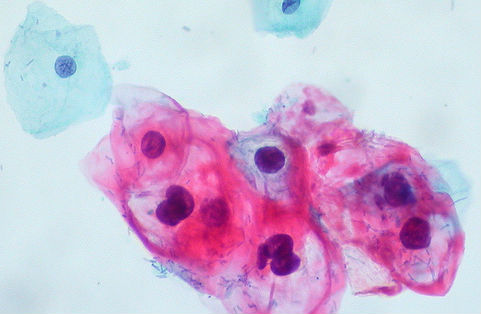There was a decrease in screening for sexually transmitted infections, an unintended consequence of Ontario’s changes to cervical cancer screening guidelines, doctors have found.
The study found that the guidelines not only reduced Pap smear tests by 60 per cent (from 42 to 17 per cent), but also resulted in decreased screening rates for gonorrhea and chlamydia – the two most common STIs in women aged 15 to 24 – from 40 to 20 per cent.
“Historically, we know that Pap tests and STI screening are linked because they’re often performed at the same time,” said Dr. Tali Bogler, a family physician at St. Michael’s and the study’s lead researcher. “Now that the Ontario guidelines delay cervical cancer screening until age 21 and also recommend less frequent intervals, we found that women weren’t visiting family physicians as often for Pap tests, causing a drop in STI screening as well.”
Female patients were also less likely to be screened for syphilis, hepatitis C and HIV under the new guidelines. The findings are concerning, especially because over the past 10 years chlamydia and gonorrhea rates in Canadians rose by 72 and 53 per cent, respectively.
“Based on prevalence trends, our findings suggest a possibly harmful public health consequence,” said Dr. Bogler. “These infections are extremely common in young women; therefore it’s critical that family physicians find new and innovative ways to screen for STIs in sexually active women under 25.”
Before 2012, women were advised to start cervical cancer screening within three years of becoming sexually active, followed by annual screening. After three normal Pap results, screenings were recommended every two or three years until the age of 70.
However, Cancer Care Ontario released new guidelines in May 2012 advising screening start at age 21 in women who are or ever have been sexually active, with three-year screening intervals if Pap results are normal. Most Ontario physicians follow these guidelines, but to the researchers’ knowledge, there have been no studies investigating the impact of the new Ontario guidelines on STI screening.
“Primary care providers must explore other opportunities to discuss sexual health with their female patients and screen for STIs in at-risk women,” said Dr. Bogler. “Self-administered swabs and urine tests are highly accurate for detecting STIs and can be easily extended into community settings.”
The researchers suggest that these non-invasive testing methods could be used in high schools, universities and other community outreach sites to help young women access treatment and avoid the long-term health issues caused by untreated STIs – such as pelvic inflammatory disease, infertility and ectopic pregnancy.
Agencies/Canadajournal
 Canada Journal – News of the World Articles and videos to bring you the biggest Canadian news stories from across the country every day
Canada Journal – News of the World Articles and videos to bring you the biggest Canadian news stories from across the country every day



